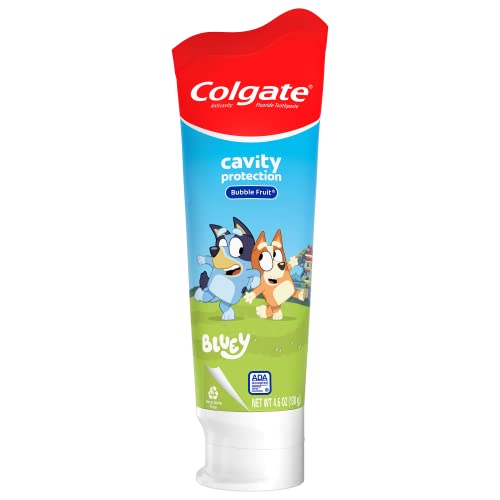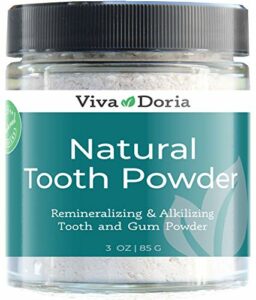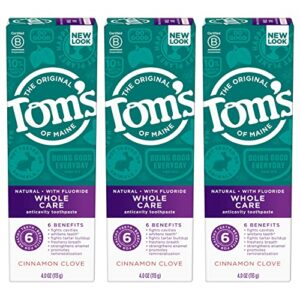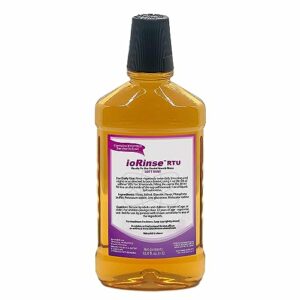Dear parents, we understand the importance of your child’s dental health and the desire to make informed decisions when it comes to their oral care. That’s why we’ve created this blog post to address the common questions and concerns you may have regarding fluoride toothpaste for children. We want to assure you that we are here to provide you with the necessary information to make the best choices for your little ones. So sit back, relax, and let us answer all your queries about fluoride toothpaste for children.
Protect Your Children’s Teeth with the Bestselling Fluoride Toothpastes for Kids
What is fluoride toothpaste?
Fluoride toothpaste is a type of toothpaste that contains the mineral fluoride as one of its key ingredients. Fluoride is a naturally occurring mineral that has been proven to be highly beneficial for dental health. In fact, it has been widely recognized as one of the most important advancements in oral hygiene.
The Importance of Fluoride Toothpaste
Using fluoride toothpaste is crucial for maintaining good dental hygiene and preventing tooth decay. Here are some key reasons why fluoride toothpaste is essential:
- Prevents Tooth Decay: Fluoride has the ability to strengthen the enamel, which is the protective outer layer of the teeth. This helps to prevent tooth decay by making the enamel more resistant to acid attacks from plaque and bacteria.
- Remineralizes Teeth: Fluoride has the unique ability to remineralize teeth, which means it can reverse the early stages of tooth decay. By replenishing lost minerals, fluoride helps to repair areas of the teeth that have been weakened by acids.
- Reduces Sensitivity: Many people suffer from tooth sensitivity, which can make eating or drinking certain foods and beverages a painful experience. Fluoride toothpaste can help reduce sensitivity by strengthening the enamel and providing a protective barrier against external stimuli.
- Promotes Stronger Teeth: By incorporating fluoride into your oral care routine, you are giving your teeth the necessary tools to become stronger and more resilient. This is especially important for children, as their teeth are still developing and need extra protection.
How Does Fluoride Toothpaste Work?
Fluoride toothpaste works by delivering the mineral directly to the teeth and gums during brushing. The fluoride reacts with the enamel, creating a protective layer and strengthening weak areas. Here is a step-by-step breakdown of how fluoride toothpaste works:
- Mechanical Action: When you brush your teeth with fluoride toothpaste, the physical action of the toothbrush bristles helps to remove plaque and food particles from the teeth.
- Fluoride Release: As you brush, the fluoride in the toothpaste is released onto the teeth and gums, allowing it to come into contact with the enamel.
- Enamel Absorption: The enamel absorbs the fluoride, which helps to repair and strengthen weak spots, preventing tooth decay.
- Prevention of Decay: The strengthened enamel is now more resistant to acid attacks from plaque and bacteria, reducing the risk of tooth decay.
Choosing the Right Fluoride Toothpaste
When choosing a fluoride toothpaste, there are a few factors to consider. Here are some key points to keep in mind:
- Fluoride content: Look for toothpaste with a fluoride content of 1,000 to 1,500 parts per million (ppm) for optimal protection.
- Age appropriateness: There are specific fluoride toothpastes formulated for different age groups. Make sure to choose a toothpaste that is suitable for your specific needs.
- ADA Seal of Acceptance: Look for the American Dental Association (ADA) Seal of Acceptance on the packaging. This ensures that the toothpaste has met the ADA’s rigorous standards for safety and effectiveness.
- Personal preference: Consider factors such as flavor, texture, and any specific dental concerns you may have (e.g., sensitivity, gum health) when selecting a fluoride toothpaste.
Using fluoride toothpaste as part of your daily oral care routine is a simple yet effective way to protect your teeth and maintain good dental health. So, make sure to choose a fluoride toothpaste that suits your needs and brush regularly to keep your smile bright and healthy!
Is fluoride toothpaste safe for children?
As a parent, it’s natural to have concerns about the products we use on our children, especially when it comes to their oral health. One common question that often arises is whether fluoride toothpaste is safe for children. In this blog section, we aim to provide reassurance and address any concerns you may have.
The Importance of Fluoride
Fluoride is a mineral that plays a crucial role in preventing tooth decay. It strengthens tooth enamel, making it more resistant to acid attacks caused by bacteria and sugary foods. The American Dental Association (ADA) and other reputable dental organizations strongly recommend the use of fluoride toothpaste for both children and adults.
Swallowing Concerns
One of the main concerns parents have about fluoride toothpaste is the potential for their child to swallow it. While it’s important to teach children to spit out toothpaste as early as possible, accidental swallowing is not a cause for panic. Here’s why:
- The small amount of fluoride in a pea-sized amount of toothpaste is generally safe if swallowed.
- The dosage of fluoride in toothpaste is carefully regulated to minimize any potential risks.
- The benefits of fluoride in preventing tooth decay outweigh the minimal risks associated with swallowing small amounts of toothpaste.
Dosage Guidelines
To ensure the safe use of fluoride toothpaste, it’s essential to follow the recommended dosage guidelines:
- For children under three years old, a smear of toothpaste the size of a grain of rice is sufficient.
- For children three to six years old, a pea-sized amount of toothpaste is recommended.
- Parents should always supervise toothbrushing to ensure their child uses the appropriate amount of toothpaste and spits it out.
Potential Side Effects
Some parents worry about potential side effects of fluoride toothpaste. However, when used as directed, the benefits of fluoride far outweigh any minimal risks. Here are some important points to consider:
- Dental fluorosis, a cosmetic condition characterized by white spots on the teeth, is usually a result of excessive fluoride consumption, such as drinking fluoridated water and using too much toothpaste.
- The regulated dosage of fluoride in toothpaste is designed to minimize the risk of dental fluorosis.
- The concentration of fluoride in children’s toothpaste is lower than in adult toothpaste, further reducing any potential side effects.
When should children start using fluoride toothpaste?
Introduction:Good oral hygiene habits are important for children right from an early age. One key component of maintaining healthy teeth is the use of fluoride toothpaste. In this blog section, we will discuss the recommended age at which children should start using fluoride toothpaste and provide tips on how to introduce it into their oral care routine.
Why is fluoride toothpaste important?
Fluoride is a mineral that helps prevent tooth decay by strengthening the enamel. It works by remineralizing the teeth and making them more resistant to acid attacks from bacteria and sugary foods. Using fluoride toothpaste is a simple and effective way to protect your child’s teeth from cavities and maintain good oral health.
Recommended age to start using fluoride toothpaste
The American Dental Association (ADA) recommends that parents start using fluoride toothpaste as soon as their child’s first tooth comes in. However, it’s important to use the right amount of toothpaste to avoid any potential risks.
Infants (0-2 years old)
- Until the age of 3, it is recommended to use a rice-grain-sized smear of fluoride toothpaste.
- Parents should brush their child’s teeth twice a day, preferably in the morning and before bed.
- Supervision is crucial during brushing to ensure that the child does not swallow the toothpaste.
Children (2-6 years old)
- From the age of 3, a pea-sized amount of fluoride toothpaste should be used.
- Brushing should be done twice a day for two minutes each time.
- Parents should continue to supervise brushing to ensure that the child spits out the toothpaste and does not swallow it.
Tips for introducing fluoride toothpaste
Introducing fluoride toothpaste into your child’s oral care routine can be a gradual process. Here are some tips to help make it a positive experience:
- Start with water: Before introducing fluoride toothpaste, begin by using water to brush your child’s teeth. This helps them get accustomed to the brushing process.
- Choose a tasty fluoride toothpaste: Look for toothpaste flavors that your child enjoys, such as fruit or bubble gum. This can make brushing more enjoyable for them.
- Make it a fun activity: Turn brushing into a fun and interactive activity by singing songs, using a timer, or letting your child pick out their toothbrush and toothpaste.
- Lead by example: Show your child how to brush their teeth properly by brushing together. This can encourage them to imitate your actions and develop good brushing habits.
How much fluoride toothpaste should children use?
Proper dental hygiene is essential for children’s oral health, and one important aspect of this is using fluoride toothpaste. Fluoride helps prevent tooth decay and strengthens tooth enamel, but it’s crucial to use the right amount for children of different ages. In this blog section, we will discuss the appropriate amount of fluoride toothpaste to use for children and provide guidance on teaching them proper brushing techniques.
Why is fluoride important for children’s oral health?
Fluoride is a mineral that has been proven to prevent tooth decay. It works by strengthening the tooth enamel, making it more resistant to acid attacks from bacteria and sugary foods. Brushing with fluoride toothpaste is one of the most effective ways to ensure children’s teeth stay healthy and cavity-free.
Fluoride toothpaste guidelines for children
Age 0-2 years
For children under the age of 2, it’s important to use fluoride toothpaste, but only in a minimal amount. This is because young children tend to swallow toothpaste instead of spitting it out. Here are some guidelines to follow:
- Use a smear or rice grain-sized amount of fluoride toothpaste.
- Brush your child’s teeth twice a day, preferably after breakfast and before bedtime.
- Encourage your child to spit out the toothpaste, but if swallowing occurs, don’t worry as the amount is minimal.
Age 3-6 years
As children grow older and learn to spit out toothpaste, the amount of fluoride toothpaste can be increased. Here’s what you should do for children between the ages of 3 to 6:
- Use a pea-sized amount of fluoride toothpaste.
- Brush your child’s teeth twice a day for two minutes each time.
- Teach your child how to spit out the toothpaste after brushing.
Age 7 years and older
Once children reach the age of 7, they can start using adult-strength fluoride toothpaste. Here are some guidelines to follow:
- Use a pea-sized amount of fluoride toothpaste.
- Brush your child’s teeth twice a day for two minutes each time.
- Ensure your child spits out the toothpaste after brushing to avoid swallowing excess fluoride.
Teaching proper brushing techniques
In addition to using the appropriate amount of fluoride toothpaste, it’s essential to teach children proper brushing techniques. Here are some tips to help your child develop good brushing habits:
- Use a soft-bristled toothbrush that is appropriate for your child’s age.
- Hold the toothbrush at a 45-degree angle and brush gently in circular motions.
- Make sure to brush all surfaces of the teeth, including the front, back, and chewing surfaces.
- Encourage your child to brush for two minutes each time, using a timer or a fun song to make it enjoyable.
- Supervise your child’s brushing until they have developed the dexterity to brush effectively on their own.
Understanding the Benefits and Safety of Fluoride Toothpaste for your Child
In conclusion, we understand that there may be lingering concerns and questions about fluoride toothpaste for children. However, we hope that this blog post has provided you with the information you need to make an informed decision. It is important to remember that fluoride toothpaste, when used appropriately and under adult supervision, plays a crucial role in maintaining your child’s oral health and preventing tooth decay. As always, consult with your child’s dentist for personalized advice and recommendations. We wish you and your little ones healthy smiles and happy brushing!





















